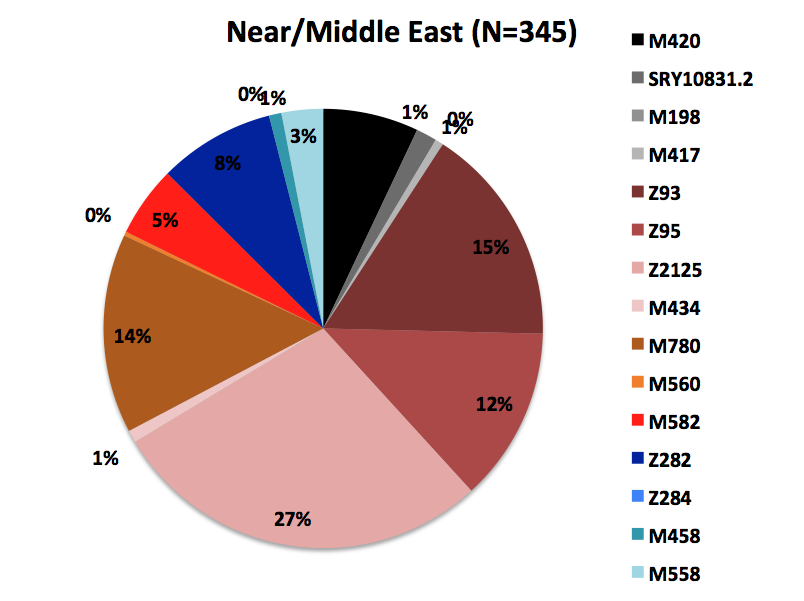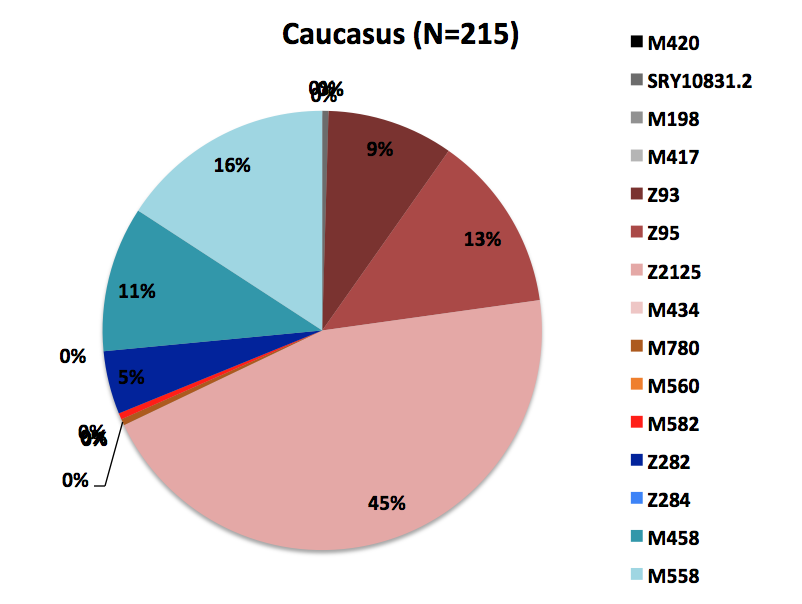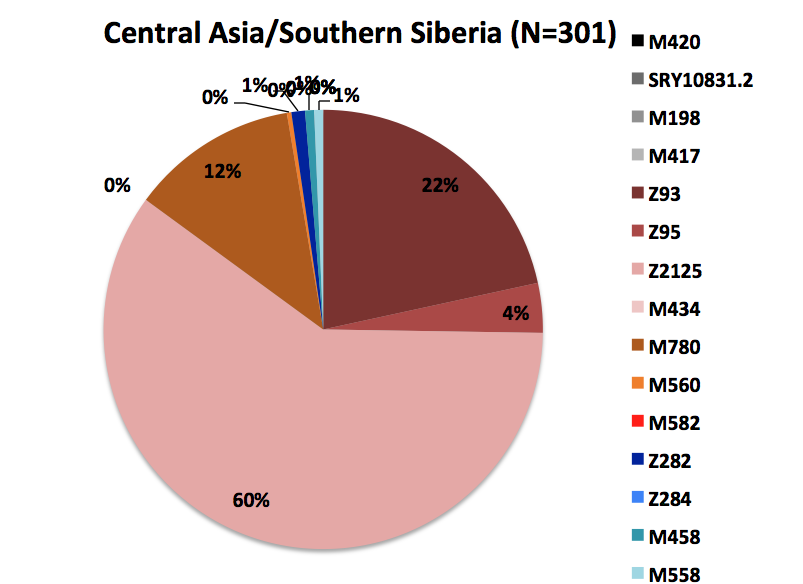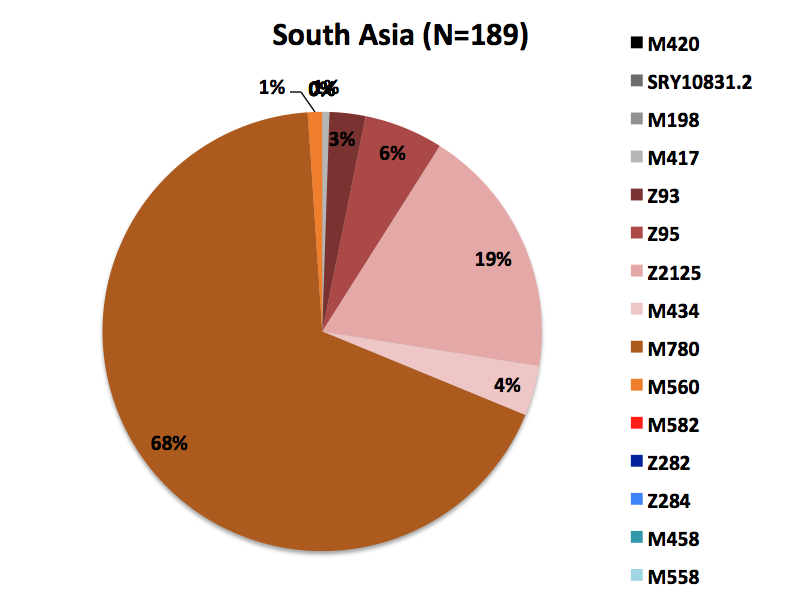Angela
Elite member
- Messages
- 21,823
- Reaction score
- 12,329
- Points
- 113
- Ethnic group
- Italian
Alan: With "Armenian like" here they mean the BaArmenian sample this is like 4/5 West Asian + 1/5 North European.
I don't think so. I think the Haak et al paper specifically says "modern" Armenian like, not BaArmenian like.
Alan: Unlikely refuge more likely continuity of WHG/UHG like H&G before they merged with Basal Eurasian like groups in Anatolia and became EEF. UHG/WHG like ancestry in EEF is up to 50-60%. This I and C1 Haplogroup (possibly also J2b?) represent this UHG/WHG like ancestry.
I don't think we know yet where "Basal Eurasian" hunter-gatherers mixed with UHGs. (We don't even precisely know yet how "Basal Eurasian" is defined, where it was centered, etc.etc. Hopefully, this paper will tell us.) Perhaps the admixture took place in central or northwestern Anatolia, perhaps it was in southeast Anatolia/north-central Levant. The first farmers to leave the Near East were the ones who set off from the area of southeast Anatolia/north-central Levant for Cyprus, and I don't know of any indication that they were appreciably different from the ones further up the coast. Time will tell, I suppose
LeBrok: Very possible, I always thought about them as pottery or copper age expansion. One of the important technology period.
You mean the mid-to-late Neolithic that perhaps brought J2 and E-V13 to Europe 4700 BC? I think that's too late for pottery. These are some commonly accepted dates:
PPN1:10,000 BCE to 8,800 BCE (Earliest sites perhaps Gobekli Tepe, then Levant sites
PPN2: 8800 BCE to 6400 BCE
PN: 6400 BCE
Given those dates, I hope the paper goes into some detail about the archaeological setting of these 7000 BCE samples. By the time of Kumtepe, which Fire-Haired brought up, which is 4700 BCE (the same date when we find J2 and E-V13 in Europe) you're way into the Pottery Neolithic. Interestingly, if this source is correct, they were already using copper. (although no evidence of copper making) So, could this have any connection to the appearance of copper working in the Balkans?
https://en.wikipedia.org/wiki/Kumtepe
I would advise caution, however, as I'm not sure about the reliability of Wiki as a source.
I also think we have to be cautious about assuming that the authors meant that the Kumtepe sample was different because it had ANE. So far as I know the paper hasn't been published, and the genome hasn't been published. Perhaps it's more southerly gene flow in place of, or in addition to, ANE, which would make sense if E-V13 is not Mesolithic in Europe but came later from the south.
(Just parenthetically, from reading up more on Kumtepe, this whole Troad area was considered the "Aegean world" by 4700 BCE, not really the "Anatolian" world. That has implications genetically as well.)
Tomenable: Could that Near Eastern / Armenian / "Teal" admixture in Yamnaya come from the Caucasus region?
From south of it originally and/or as I've been saying for years, from the direction of Kazakstan, which had experienced its own genetic flow from the south.
Tomenable: Modern group most genetically similar to "Teal" people, are not Armenians, but Mingrelians from Georgia:
Georgians are a modern population with ancestry from the north. Armenians are also a modern population, of course. However, the Reich Lab has access to and is probably quite far along in analyzing all sorts of ancient samples from the Caucasus and beyond. If Lazaridis is still calling the admixing population "modern Armenian-like", I'll stick with that until the Lab publishes something that changes it.
Tomenable: We cannot label all of that as "Near Eastern". Those were two distinct admixtures. The one carried by Early Neolithic EEF farmers who expanded into Europe from Western Anatolia, can be called "Levant-Anatolia" or maybe "Levant-Anatolia-Mesopotamia", while the one carried later by Proto-Indo-Europeans during the Copper Age (Eneolithic) and the Bronze Age, was a different admixture, it can be called "Caucasus-Gedrosia".
I could just say ditto to Alan's post, but I'll reiterate for precision and clarity: the group that accounts for approx. 50% of Yamnaya ancestry and perhaps a little less of Corded Ware Ancestry is heavily Near Eastern farmer in terms of ancestry. These people didn't only go west, or northwest into Europe, and southwest into North Africa, and directly south into East Africa, they also went north and east to the Caucasus, and into Central Asia, and toward India. I've posted all the archaeological data showing that.
We don't know yet precisely when or where, but at some point these farmer groups admixed with ANE. Maybe it happened north of the Caucasus, maybe south of the Caucasu. Maybe it happened relatively early as a sort of more eastern farmer group. Maybe it happened a few thousand years into the process but before they even reached the Caucasus. Maybe the admixture happened in the Caucasus. We don't know yet. We need ancient dna. This admixed group then made it into the Steppe. At least the farmer part and perhaps the whole admixed genome originally came from south of the Caucasus. (or also by way, perhaps, of Kazakstan)
As to whether it was more "Georgian like" or more "Armenian like", as I said, I'll wait for upcoming papers. I'll also wait for upcoming papers to see how much of it was ANE and how much of it was original Near Eastern farmer.
@Nobody 1: You've been gone a while.
Ed. for clarity.
Last edited:








